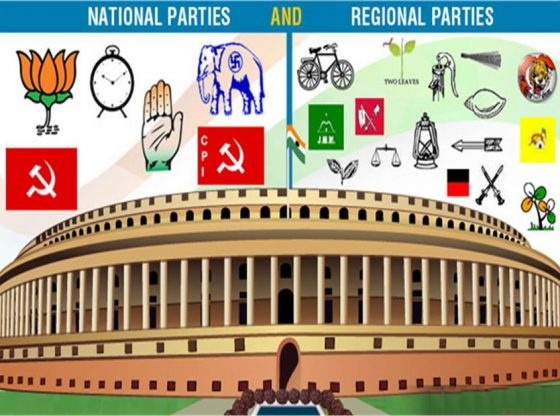NEW DELHI: The leaders of these parties do not have clarity about their political future and therefore are jumping over to other parties.
There are five regional parties–Bahujan Samaj Party (BSP), Bharat Rashtra Samithi (BRS), Janata Dal United, (JDU)Janata Dal Secular (JDS), and Nationalist Congress party (NCP led by Sharad Pawar)–are fighting for survival in this Lok Sabha election and the results against them could demote them from being
The leaders of these parties do not have clarity with regard to their political future and therefore are garnering the sentiment of jumping over to other parties, according to political pundits. For instance, even after having deep rooted loyalty of Jatav community (which is around 13 percent in Uttar Pradesh) towards the BSP, according to party insiders, the party hasn’t been able to channelize political careers creating an impression among the rank and file that the party is less equipped to bestow the rewards among its leaders. It has not only reduced the motivation of its cadre but also its vibrant presence among its voters. After forming the government in UP in 2007 with around 30 percent vote share (206 assembly seats), the party has since then been losing the vote share with each passing election. The recent assembly election in 2022 gave it less than 13 percent votes and one meager assembly seat.
The two other state parties like BRS and JDS are facing similar kind of existential crisis. Their traditional vote bank of Muslims have drastically drifted towards the grand old party in the recently held assembly elections leaving both the parties to look for a strategy to pushback Congress or bring back its Muslim vote bank.
BRS, which has helmed Telangana government twice (from 2014) before the Congress party overturned its rule last year, is at its lowest as its leaders have deserted it before the LS elections, many of whom joined BJP and others have joined the Congress. As the party chief K. Chandrashekhar Rao was left by leaders close to him for greener pastures. In 2018, its vote share dipped by 10 percent from around 48 percent to around 38 percent in the 2023 assembly elections. Lacking momentum, according to BRS leaders, the party could be at the threshold of sharp decline.
A political watcher said, “The Congress grew at the cost of BRS. A lot of Muslims drove towards it from the BRS. Now the BJP is coming and it’s growing, it is certainly growing at the cost of BRS. So how would the BRS survive unless it draws a strategy to pushback both the national parties in Telangana. Moreover, the life of JDS in Karnataka seems limited now, they have been unable to evolve with the new political society and with Congress and BJP already having found a greater space it would be difficult for it to grow back.”
The JDU has faced its fair share of tumultuous history with its chief Nitish Kumar (9 time chief minister) known for his political somersaults every time he detects a threat to his chair. It has not only shaken his voter base bus also reduced the amount of trust among his leaders.
A political analyst said, “The only thing that has kept him relevant is the alliance with stronger parties. He hasn’t tested standing alone, if he does that he will know how weak his appeal among voters has become. His vote share in 2020 assembly elections was 15.39 percent, 1.44 percent less than 2015 assembly elections. Although the party raised its vote share in 2019 by getting around 21 percent but that was only because of vote transfer from BJP as both the parties were in alliance with each other.”
The fifth party NCP led by Pawar is also facing its lowest as majority of its cadre shifted to Ajit Pawar after the split which, according to NCP leaders, had made him contemplate whether to reconstruct the party or to merge with the Congress.

